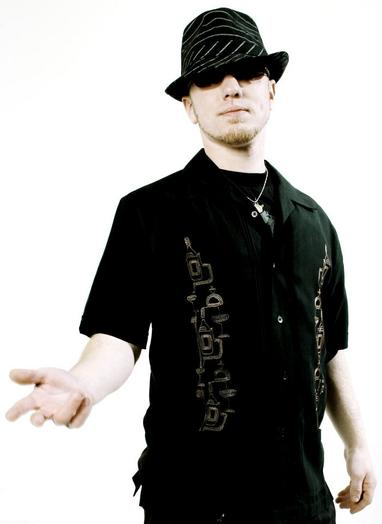Aaron Bland .com
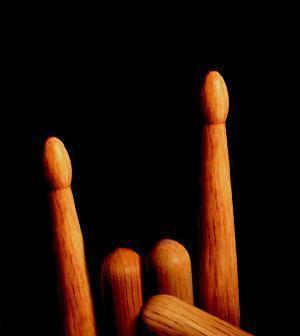
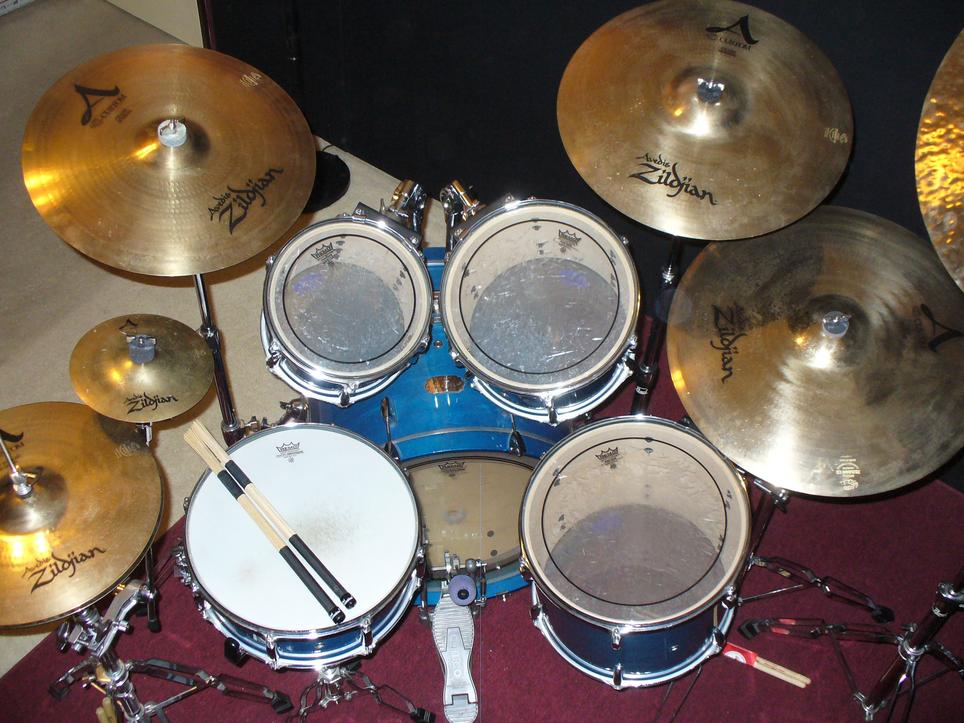
Technique Rudiments Snare Solos
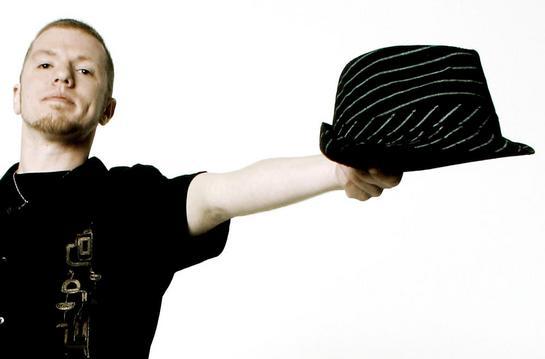
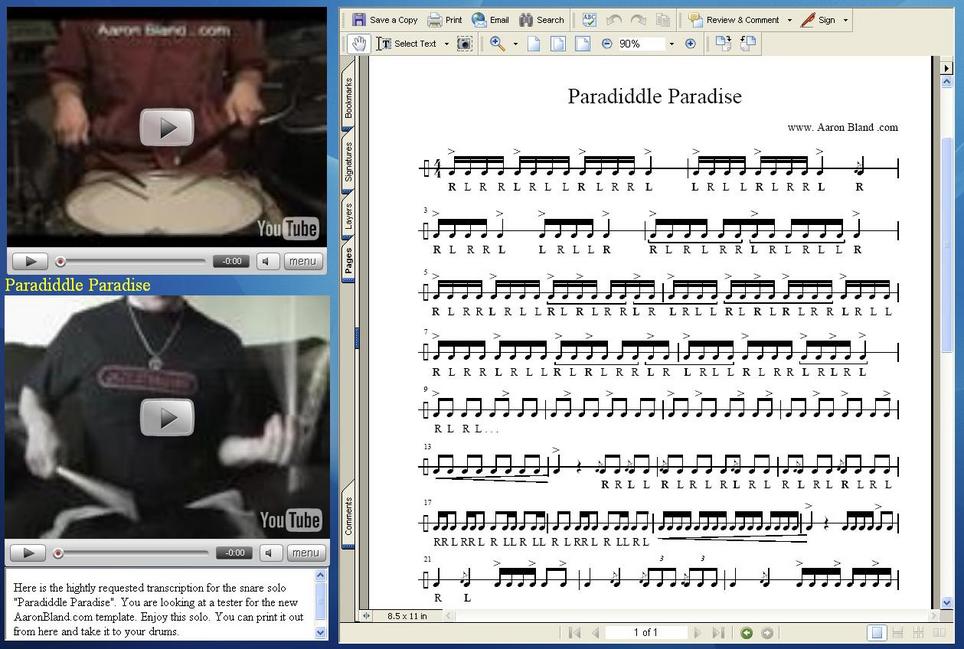
Single Surface Playing
Rudiments are the basic building blocks of single surface and snare drum music. This page will detail the standard rudiments used in concert style playing as well as some hybrid rudiments popular in drum corp style playing.
Accents and Taps
The extreme dynamic between the softest, most controlled note that a drummer can play and the loudest, most forceful note. Marching band drummers often attribute these extremes with angles (1° - 90° ), or inches (1" - 12" from head). When practicing these, be sure to "choke" the stick after each accent leading in to a tap, absorbing the rebound and keeping the stick within range of a tap. Alternatively, raise the stick to accent height, immediately before playing an accented note. If you slow your playing down and analyze it, you should be able to get in to the appropriate position (stick angle and distance from head) before each note you play.
The extreme dynamic between the softest, most controlled note that a drummer can play and the loudest, most forceful note. Marching band drummers often attribute these extremes with angles (1° - 90° ), or inches (1" - 12" from head). When practicing these, be sure to "choke" the stick after each accent leading in to a tap, absorbing the rebound and keeping the stick within range of a tap. Alternatively, raise the stick to accent height, immediately before playing an accented note. If you slow your playing down and analyze it, you should be able to get in to the appropriate position (stick angle and distance from head) before each note you play.
Buzzes and Buzz Rolls
This lesson demonstrates the first "roll" a student usually learns. By pressing the stick in to the surface of the snare drum or practice pad, the stick will bounce quickly, striking the drum several times, and creating a "buzzing" sound. This technique can be used with both hands quickly to play a "buzz roll".
This lesson demonstrates the first "roll" a student usually learns. By pressing the stick in to the surface of the snare drum or practice pad, the stick will bounce quickly, striking the drum several times, and creating a "buzzing" sound. This technique can be used with both hands quickly to play a "buzz roll".
Diddles (Double Strokes)
This is a rudiment that is used to create two notes in a row quickly on the same hand, in the same amount of time as a single note played at the same tempo. It is demonstrated in this exercise in every possible combination of 16th notes and will later be used to play double stroke or open rolls.
This is a rudiment that is used to create two notes in a row quickly on the same hand, in the same amount of time as a single note played at the same tempo. It is demonstrated in this exercise in every possible combination of 16th notes and will later be used to play double stroke or open rolls.
Flams
This is basically a tap and and accent started at the same time, but staggered slightly to create a full sounding note. A right handed flam is an accent on the right hand just after a tap of the left. If you put your hands in this starting position, you will notice that your left hand is closer to the surface that you are playing on so if you begin both strokes at the same time, your left hand will arrive on the playing surface slightly before the right handed accent. A left flam is played with a left hand accent immediately following a right hand tap. The exercise examines right flams, left flams, alternate flams, accented flams during 16th notes, flammed triplets, flam-a-diddles, swiss triplets, flam taps and flam tap taps, as well as exercises and examples of some musical applications to playing flams.
This is basically a tap and and accent started at the same time, but staggered slightly to create a full sounding note. A right handed flam is an accent on the right hand just after a tap of the left. If you put your hands in this starting position, you will notice that your left hand is closer to the surface that you are playing on so if you begin both strokes at the same time, your left hand will arrive on the playing surface slightly before the right handed accent. A left flam is played with a left hand accent immediately following a right hand tap. The exercise examines right flams, left flams, alternate flams, accented flams during 16th notes, flammed triplets, flam-a-diddles, swiss triplets, flam taps and flam tap taps, as well as exercises and examples of some musical applications to playing flams.
Tap Rolls
Tap rolls are rolls that typically start on your left hand after a single stroke on your right hand. This single stroke is often accented to emphasize the beginning of the roll.
Tap rolls are rolls that typically start on your left hand after a single stroke on your right hand. This single stroke is often accented to emphasize the beginning of the roll.
Drags
Also called a "ruff" this is simply a quick double stroke played on one hand leading in to an accent on the other hand which falls on the beat.
Left hand drag: RR L
Right hand drag : LLR
Also called a "ruff" this is simply a quick double stroke played on one hand leading in to an accent on the other hand which falls on the beat.
Left hand drag: RR L
Right hand drag : LLR
Rolls
An open roll or double-stroke roll is the product of consecutively played double strokes alternating from 2 notes on the right hand to 2 on the left with an even meter. (RRLLRRLL). They are usually played as 32nd notes (twice as fast as 16th notes). From 5-stroke rolls to 33-stroke rolls and longer, they can be played at any meter and should have an even, flowing sound.
An open roll or double-stroke roll is the product of consecutively played double strokes alternating from 2 notes on the right hand to 2 on the left with an even meter. (RRLLRRLL). They are usually played as 32nd notes (twice as fast as 16th notes). From 5-stroke rolls to 33-stroke rolls and longer, they can be played at any meter and should have an even, flowing sound.
Rudimental Overview in Triplets
This is an exercise using all of the most common rudiments and several hybrid rudiments in a structure that alternates each rudiment on a different hand in triplet form.
This is an exercise using all of the most common rudiments and several hybrid rudiments in a structure that alternates each rudiment on a different hand in triplet form.
Rudimental Overview in 16th Notes
The same as above but with a 16th note format.
The same as above but with a 16th note format.
Accented Paradiddles
This is simply the paradiddle sticking pattern (RLRR LRLL) with an accent on the first note of each lead. The exercise moves the drummer through every single possible accent pattern with paradiddles in preparation to take on accented inverted paradiddles.
This is simply the paradiddle sticking pattern (RLRR LRLL) with an accent on the first note of each lead. The exercise moves the drummer through every single possible accent pattern with paradiddles in preparation to take on accented inverted paradiddles.
Check back as complete lessons will be available for each of the rudiments listed below and more...!
Check back as this page is updated with full lessons for each topic on the left.
Email me with any questions or requests:
aaron@aaronbland.com
Email me with any questions or requests:
aaron@aaronbland.com
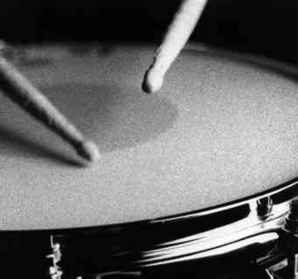

> >
R L R R L R L L
R L R R L R L L
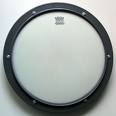
(
R )
( R
L )
( LLR ) ( RRL )
RRLLRRLLRRLL...
R LLRRLLRRLL...
Master the single surface and apply your knowledge to a multi-surface set.
Z Z
Z Z
Z z
z z
